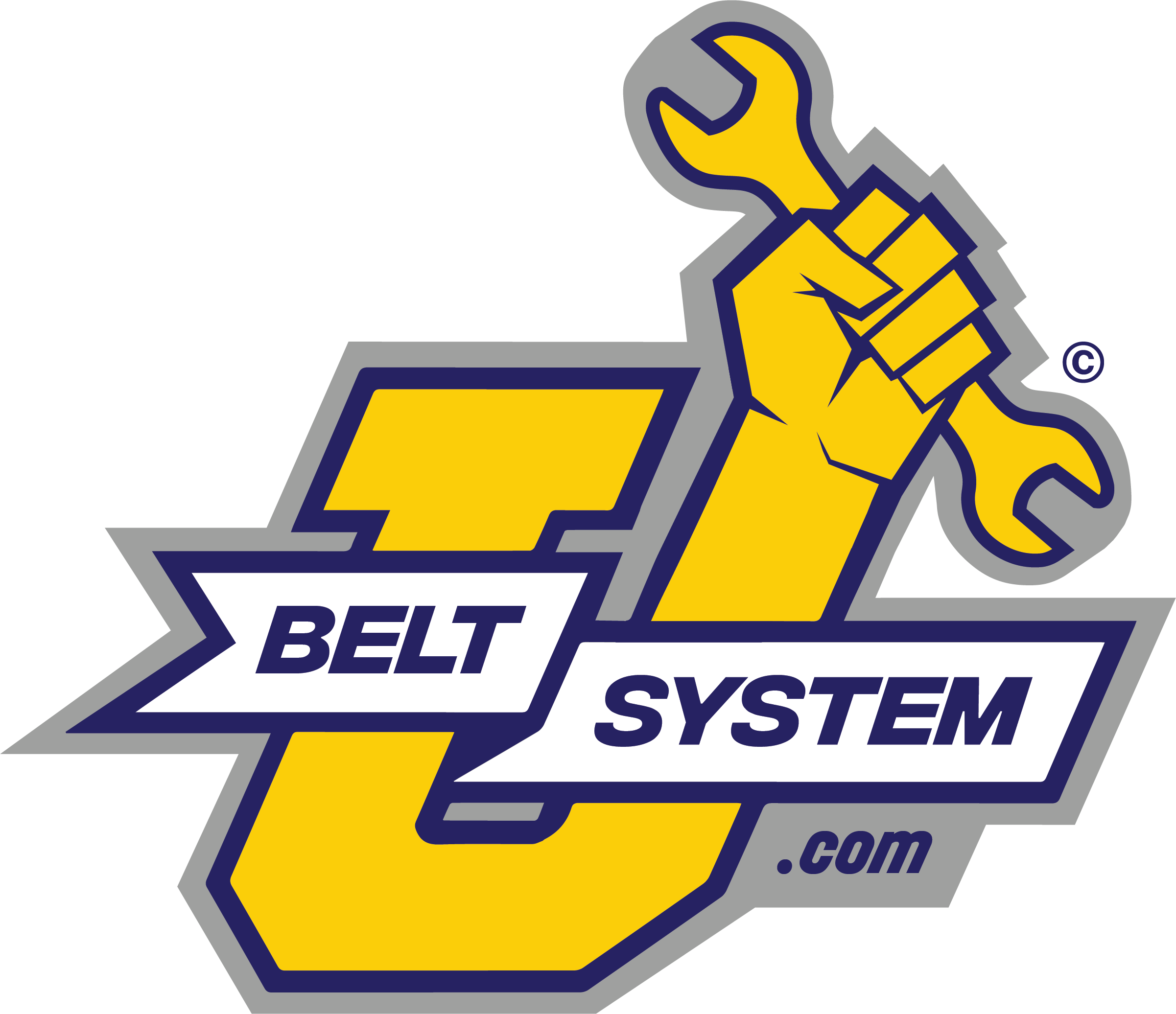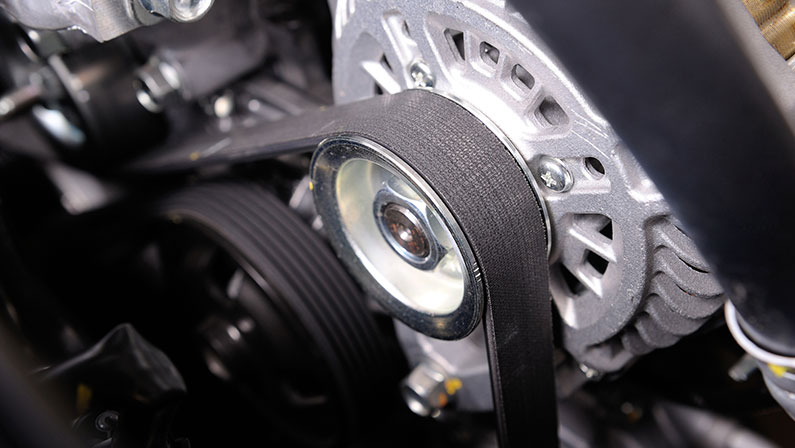Your vehicle’s serpentine belt might be slipping yet there is no guarantee you’ll be aware of the problem until it’s too late. Be prepared and memorize the most common indications of a slipping serpentine belt, so you can proactively address the problem. Below, we explain the purpose of serpentine belts and delve into the most common signs of slippage every automobile owner and lessee should be aware of.
A Quick Look at Serpentine Belt Functionality
Let’s start off by defining the purpose of automotive serpentine belts so drivers understand exactly why these belts are important. Also referred to as accessory belts or drive belts, serpentine belts are generally the first belt visible when opening the vehicle’s hood. The continuous grooves that move along the length of the belt are the primary means of identifying the serpentine belt. The logic in designing the belt with grooves is it facilitates the belt’s grip as it turns accessory pulleys.
The serpentine belt redirects power to the accessory pulleys as the crankshaft spins during engine operation. Serpentine belts are not infallible. Here’s a quick look at the top signs that indicate there is a problem with your vehicle’s serpentine belt.
A Squealing Sound
If you hear squealing sounds from the front section of the vehicle, it can be an indication that the serpentine belt is slipping or misaligned. Realigning the serpentine belt or improving its tension can remedy the problem. However, if the belt has significant damage, it will require replacement.
ACDelco GM Original Equipment 12626076 V-Ribbed Serpentine Belt
$26.35 (as of July 7, 2025 16:21 GMT -04:00 – More infoProduct prices and availability are accurate as of the date/time indicated and are subject to change. Any price and availability information displayed on [relevant Amazon Site(s), as applicable] at the time of purchase will apply to the purchase of this product.)ACDelco GM Original Equipment 12626222 V-Ribbed Serpentine Belt
$40.78 (as of July 7, 2025 16:21 GMT -04:00 – More infoProduct prices and availability are accurate as of the date/time indicated and are subject to change. Any price and availability information displayed on [relevant Amazon Site(s), as applicable] at the time of purchase will apply to the purchase of this product.)Gates K080810HD FleetRunner Micro-V Serpentine Drive Belt
$38.78 (as of July 7, 2025 16:21 GMT -04:00 – More infoProduct prices and availability are accurate as of the date/time indicated and are subject to change. Any price and availability information displayed on [relevant Amazon Site(s), as applicable] at the time of purchase will apply to the purchase of this product.)An Engine That Overheats
The serpentine belt is responsible for triggering the vehicle’s water pump to keep the engine cool. A worn or damaged serpentine belt will prevent the activation of the water pump, meaning the engine will overheat due to the inability to cool. Take a look at the temperature gauge on your vehicle’s dashboard. If you spot the needle is in the red or moving toward the red, it can be an indication that the serpentine belt needs to be replaced to prevent engine damage.
Insufficient or No Air Conditioning
An air conditioner that malfunctions can signify the serpentine belt is damaged or worn. However, the lack of cool air in your vehicle is not a guarantee that the serpentine belt is the cause of the problem. It is possible that the vehicle’s coolant or A/C system requires attention. Have the serpentine belt analyzed in addition to the air conditioning system, and you’ll be able to move forward with the appropriate repair or replacement in full confidence knowing the underlying cause of the problem is addressed.
The Lack of Power Steering
Your vehicle’s serpentine belt is also responsible for ensuring the power steering system works as designed. If the serpentine belt is bad, moving the steering wheel will be significantly more challenging. However, there is also a chance that insufficient power steering fluid is also the cause of the diminished power steering. Check out the power steering fluid reservoir in addition to the serpentine belt after popping the hood, and you’ll have a better idea as to the true cause of the problem.
A Dead Battery
A loss of power is an indication that the battery is out of juice or the serpentine belt has slipped. A slipped or snapped serpentine belt does not allow for the alternator to charge the vehicle’s battery as designed. The lack of charge will cause the vehicle to eventually die even if you get it started. The serpentine belt must be aligned and tightened to the point that it can maintain a grip on the alternator pulley.
A Chirping Sound from the Engine
Chirping sounds emanating from the engine are often indicators that something is wrong with the serpentine belt. A slipped belt, a worn belt, or excessive humidity often cause such noise. Excessive humidity results in water forming along or near the serpentine belt, serving as a lubricant that results in the belt slipping out of position. The slippage combined with the wear along the belt ultimately creates the squealing sound. If you hear such a squealing sound, take a close look at the serpentine belt to determine if it has slipped or is damaged to the point that it requires replacement.










